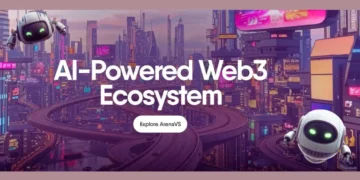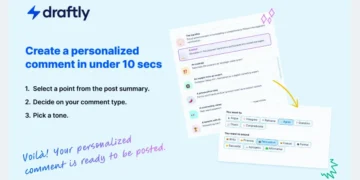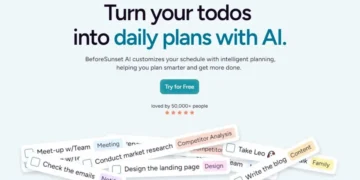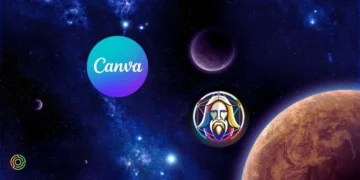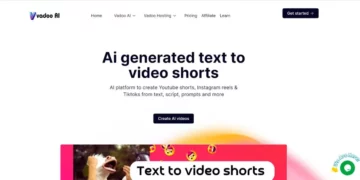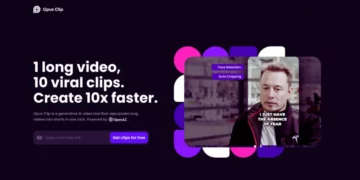OpenAI, a pioneer in artificial intelligence (AI) research, is once again at the forefront of innovation with the launch of its latest breakthrough: Sora. This new video generation model promises to redefine the way we create and experience visual content by seamlessly transforming text instructions into hyper-realistic videos.
Introducing Sora: The Next Frontier in Video Generation
Sora represents a significant leap forward in AI technology, harnessing the power of machine learning to generate lifelike scenes based solely on text input. According to OpenAI, Sora is capable of producing both realistic and imaginative visuals, ranging from intricate landscapes to dynamic character interactions.
Unleashing the power of text-to-video generation
Unlike traditional video editing software, which often requires extensive manual labor and technical expertise, Sora streamlines the content creation process by interpreting natural language instructions and translating them into stunning visuals. This groundbreaking approach not only saves time and resources, but also opens up new possibilities for storytelling and visual communication.
Prompt: “Animated scene features a close-up of a short fluffy monster kneeling beside a melting red candle. the art style is 3d and realistic, with a focus on lighting and texture. the mood of the painting is one of wonder and curiosity, as the monster gazes at the flame with… pic.twitter.com/aLMgJPI0y6
— OpenAI (@OpenAI) February 15, 2024
Unmatched realism and detail
One of Sora’s most impressive features is its ability to create complex scenes with multiple characters, precise movement and intricate detail. Whether it’s capturing the bustling streets of a city or the serene beauty of nature, Sora excels at creating immersive experiences that rival reality itself.
Pushing the boundaries of creativity
With Sora, users are limited only by their imagination. Whether you’re a filmmaker looking to bring your script to life or a content creator in need of compelling visuals, Sora offers endless possibilities for artistic expression. From historical reenactments to futuristic landscapes, the only limit is your creativity.
The evolution of text-to-video technology
While Sora may be the newest addition to the text-to-video landscape, it’s certainly not the only player in the game. Competitors like Runway, Pika, and Google’s Lumiere are also making strides in this burgeoning field, pushing the boundaries of what’s possible with AI-generated content.
Accessing Sora: A glimpse into the future
Currently, Sora is available to select test teams, allowing OpenAI to gather feedback and refine the model before its full release. In addition, the company is actively seeking input from visual artists, designers, and filmmakers to ensure that Sora meets the diverse needs of its users.
Prompt: “Several giant wooly mammoths approach treading through a snowy meadow, their long wooly fur lightly blows in the wind as they walk, snow covered trees and dramatic snow capped mountains in the distance, mid afternoon light with wispy clouds and a sun high in the distance… pic.twitter.com/Um5CWI18nS
— OpenAI (@OpenAI) February 15, 2024
Addressing challenges and risks
While Sora has immense potential, it’s not without its challenges. OpenAI acknowledges that the model may struggle to accurately simulate complex physical scenes and interpret certain nuances of cause and effect. However, ongoing research and development efforts aim to address these limitations and further enhance Sora’s capabilities.
Navigating the ethical landscape
As with any advanced AI technology, Sora raises important ethical considerations regarding the creation and distribution of synthetic content. OpenAI is committed to responsible innovation and is actively exploring ways to mitigate the potential risks associated with the proliferation of hyper-realistic AI-generated video.
Looking to the future
As Sora continues to evolve and improve, it has the potential to revolutionize not only how we create video content, but also how we perceive and interact with the digital world. Whether it’s enhancing educational materials, enriching entertainment experiences, or empowering creative professionals, Sora represents a bold step toward a future where AI-driven innovation knows no bounds.
Using physics in video game design: The Impact of Sora’s Training
In recent headlines, Sora, the OpenAI video generator, has garnered significant attention across multiple media platforms. Beyond the initial buzz, Sora’s applications span multiple industries and show immense potential waiting to be harnessed.
Unveiling Sora’s Role in Video Game Development
While I have previously shared my perspective on this groundbreaking technology, today’s focus shifts to its implications in the realm of video games. Sora’s capabilities go beyond hyper-realistic video generation; it demonstrates an unparalleled ability to create and simulate video game worlds, a domain traditionally reserved for humans and their complex programming algorithms.
According to OpenAI, Sora can “simulate artificial processes,” which includes tasks such as controlling a player in Minecraft and intricately rendering the game’s dynamics. This autonomous functionality opens up a world of possibilities for video game design and development.
The essence of Sora’s difference
What sets Sora apart from traditional video generators is its emphasis on simulating real-world physics. As a “data-driven physics engine”, Sora performs thousands of calculations to predict the interactions of objects in its environment, creating a comprehensive “world model”. This unique approach positions Sora as an invaluable tool for video game creation, a point emphasized by Nvidia senior researcher Dr. Jim Fan.
Debunking misconceptions: Does Sora learn physics?
The claim that “Sora doesn’t learn physics, it just manipulates 2D pixels” is a perspective I respectfully challenge. Such a criticism overlooks the complexity and potential of the technology at hand. For context, let’s consider the development and capabilities of GPT-4, a language model capable of generating executable Python code. GPT-4 doesn’t explicitly store Python syntax trees, but learns implicit syntax, semantics, and data structures to generate code. Similarly, Sora learns implicit forms of 3D text, 3D transformations, ray traced rendering, and physical rules to accurately model video pixels. This learning process isn’t trivial; it comes from processing massive amounts of data, allowing the model to replicate complex language and logic patterns.
Understanding Sora’s limitations
Despite its promise, Sora isn’t without limitations. While early tests show considerable potential, OpenAI acknowledges that the model still inaccurately represents the physics of many basic interactions, resulting in occasional odd and even humorous videos. However, Sora has overcome challenges that have stumped other video generators, such as object permanence and improved camera motion dynamics.
I see some vocal objections: "Sora is not learning physics, it's just manipulating pixels in 2D".
I respectfully disagree with this reductionist view. It's similar to saying "GPT-4 doesn't learn coding, it's just sampling strings". Well, what transformers do is just manipulating… pic.twitter.com/6omzD423vr
— Jim Fan (@DrJimFan) February 16, 2024
Exploring Sora’s training speculations
There has been much speculation about Sora’s training methods, with rumors suggesting the use of video game engines such as Unreal Engine 5. While OpenAI hasn’t confirmed these speculations, the idea that Sora may have gleaned insights from existing digital worlds is intriguing. However, this raises questions about intellectual property and proper attribution, especially in light of previous demands on OpenAI regarding uncompensated model training.
Realizing Sora’s potential in video game development
Despite its current limitations, Sora is poised to revolutionize the video game development landscape, significantly lowering barriers to entry for developers and fostering faster, more efficient content creation. However, it also poses significant challenges, from intellectual property considerations to its potential impact on employment in the game industry, which has recently experienced numerous layoffs.
See also: Unveiling Gemini: Google’s New Era in AI and Image Generation
Conclusion
In conclusion, Sora is a testament to the transformative power of AI technology. With its unparalleled realism, creativity, and accessibility, Sora is poised to redefine the landscape of video production and storytelling for years to come. As we embark on this exciting journey into the future of visual content creation, one thing is certain: with Sora by our side, the possibilities are limitless.
FAQs
What is Sora?
Sora is a cutting-edge AI model developed by OpenAI that specializes in generating hyper-realistic videos from text instructions. It uses advanced machine learning techniques to interpret natural language and translate it into visually stunning content.
How does Sora work?
Sora uses a sophisticated text-to-video generation algorithm that processes input text and generates corresponding video sequences. It understands the nuances of language, enabling it to create scenes with multiple characters, intricate movements, and detailed environments.
What can Sora be used for?
Sora has a wide range of applications in various industries and creative fields. It can be used to create marketing videos, educational content, entertainment media, virtual simulations, and much more. The only limit is your imagination.
Is Sora easy to use?
Yes, Sora is designed to be user-friendly and accessible to both novice and experienced users. Its intuitive interface allows you to enter text instructions and quickly generate high-quality videos with minimal effort.
Can Sora accurately simulate complex scenes?
While Sora excels at creating realistic visuals, it may have difficulty simulating highly complex or dynamic scenes. OpenAI recognizes this limitation and is continually refining the model to improve its performance.
Is Sora publicly available?
Currently, Sora is only available to select test teams and collaborators evaluating the model for potential use. OpenAI is actively soliciting feedback from users to further develop and improve Sora before it is released to the public.
What are the ethical considerations around Sora?
As with any advanced AI technology, Sora raises important ethical questions about the creation and distribution of synthetic content. OpenAI is committed to responsible innovation and is actively addressing concerns about privacy, authenticity, and misuse of AI-generated video.
How does Sora compare with other text-to-video models?
Sora is one of the leading text-to-video generation models, offering unparalleled realism, creativity and versatility. While there are other competitors in this space, Sora stands out for its advanced features and continuous innovation.
Will Sora integrate with other software or platforms?
OpenAI is exploring ways to integrate Sora with existing software and platforms to improve usability and accessibility. Collaborations with industry partners and developers are underway to explore potential integrations and synergies.
Where can I learn more about Sora and its capabilities?
For more information about Sora and its capabilities, including updates, tutorials, and case studies, please visit the official OpenAI website or contact the customer support team.
Follow us on our social networks and keep up to date with everything that happens in the Metaverse!
Twitter Linkedin Facebook Telegram Instagram Google News Amazon Store





